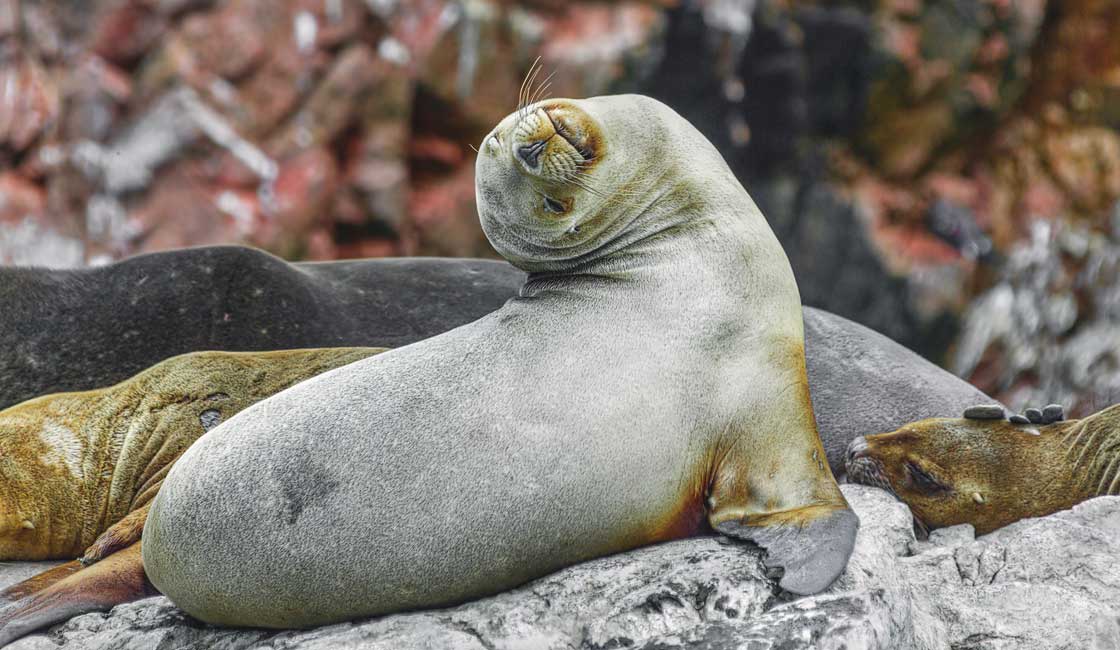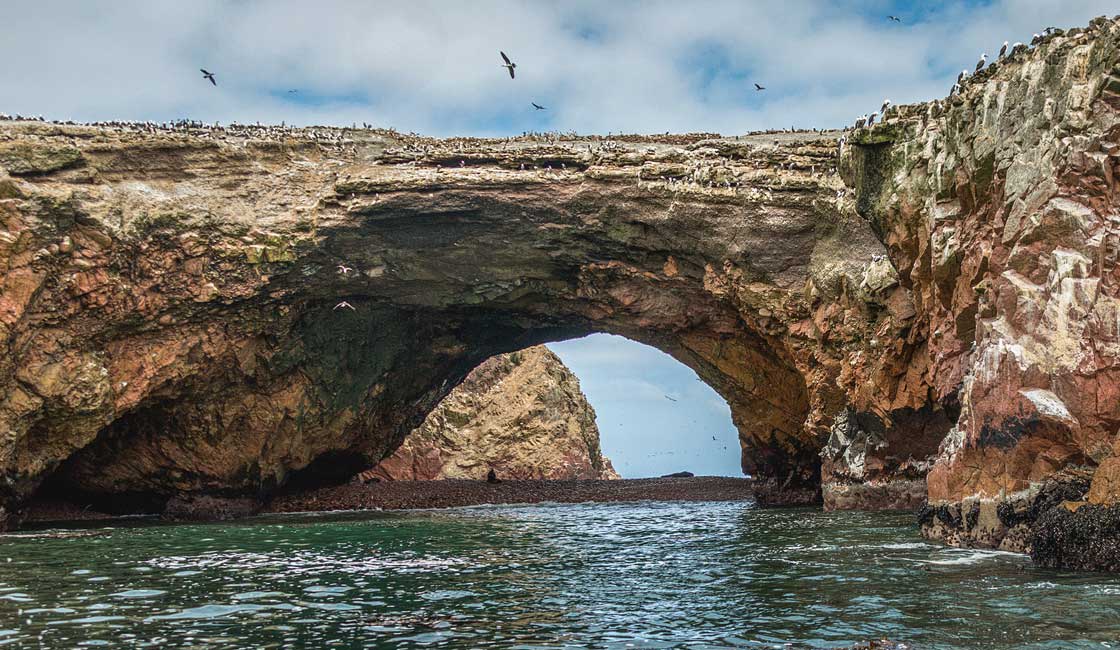
The Islas Ballestas of Peru are commonly referred to as the “poor man’s Galapagos”, and for good reason. The islands rank as one of Peru’s best wildlife-watching destinations, serving as an important sanctuary for a variety of mammals, marine species and birdlife, some of them unique to the country. And yet, they can be visited for a tiny fraction of the cost (not to mention the time and energy) it takes to plan a trip to the Galapagos.
The islands are uninhabited and largely consist of giant craggy rock formations. The Humboldt current from the Antarctic, which transports a steady supply of rich waters to the area, explains the dense concentration of wildlife to be found here. It’s not possible to set foot on the islands themselves (special permits are typically reserved for scientific researchers), but this has ensured they remain a haven for the wildlife, remaining virtually untouched by human influences.

Abundance of wildlife
The Ballestas are a small group of rocky islands located in the Pacific Ocean, 24 kilometres from the town of Paracas in the Ica region of southern Peru. The islands are accessible from the small seaside town of Paracas which is a short taxi ride from the major town of Pisco, situated 240 km south of Lima. Buses run to and from the capital regularly, the journey taking 3.5 hours, and some tourists even visit from Lima on a day trip. Alternatively, you may want to visit from the Huacachina Oasis on a local bus service, a journey of just 1.5 hours.
Upon arrival in Paracas, you’ll find that there are multiple tour agencies offering organized excursions to the islands. This is the only way to access the islands, and many agencies also offer tours from the nearby town of Pisco as well. The visit involves a 2-hour round-trip by boat and costs around US$10-15, with tours departing in the morning between 8 and 10:30 am.

Sea lion in Islas Ballestas
The outward boat journey takes about 30 minutes, after which you’ll spend about an hour cruising around the island’s’ rocky coastline with its spectacular inlets, arches and caves. As you approach the islands, you’ll start to detect slight movements on the rock surfaces. But it’s only once you get close that you realize whole rock faces are completely covered in a dense collection of marine life.
Some of the fantastic wildlife you can expect to see include Humboldt penguins, bright red sea stars and huge packs of fur seals and sea lions which can be seen basking on the shore or frolicking in the water. There is also an astonishing amount of birdlife on display, with up to 150 different species calling the islands home. These range from tendrils, cormorants and pelicans, to the blue-footed booby and the guanay guano bird, all congregating in colonies of several thousand strong. You might also catch a glimpse of Chilean flamingos (usually between June and August), condors and even dolphins and whales if you’re especially lucky.
Whilst the boats maintain a respectful distance from the shore, it’s not uncommon for some of the wildlife to come up close. Playful sea lions, in particular, can often be seen swimming alongside the vessels and entertaining passengers with their exuberant dives and loud barks.
You also won’t fail to notice that there is a lot of guano (bird droppings) on the islands. But this actually has a valuable function, serving as a rich agricultural fertilizer that is collected from the islands every decade or so.
On route to the islands, you’ll pass a huge 50 meter geoglyph in the form of a three-pronged candelabra carved into the sandy soil of the Paracas peninsula. There has been much speculation over the years as to its origins, with theories ranging from it simply being a navigational aid for ancient sailors, to a representation of a hallucinogenic plant. The geoglyph is thought to date from around 200 BC and many have connected it with the famous Nazca lines.

Rookery in Islas Ballestas
The Islas Ballestas are a firm favorite on the Peruvian tourist trail and easily combined with a multitude of other attractions within the space of 3 or 4 days. You may also want to visit the Nazca Lines and Reserva Nacional de Paracas whilst you’re in the area for more wildlife spotting opportunities, before heading further afield to the Nazca lines, Ica, Huacachina or back north to Lima.
While Rainforest Cruises aim to provide accurate and up-to-date information, we make no representations as to the accuracy or completeness of any information herein or found by following any link on this site. Rainforest Cruises cannot and will not accept responsibility for any omissions or inaccuracies, or for any consequences arising therefrom, including any losses, injuries, or damages resulting from the display or use of this information.




